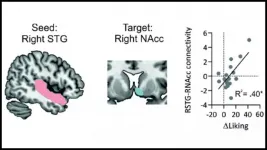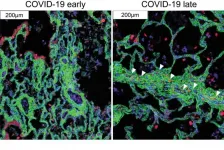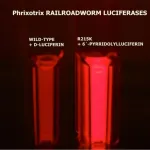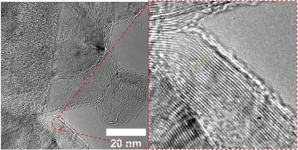New computational models to understand colon cancer
2021-03-29
(Press-News.org) Although the development of secondary cancerous growths, called metastasis, is the primary cause of death in most cancers, the cellular changes that drive it are poorly understood. In a new study, published in Genome Biology, researchers at the University of Illinois Urbana-Champaign have developed a new modeling approach to better understand how tumors become aggressive.
"Researchers have identified several cellular pathways that change when a tumor becomes aggressive. However, it is difficult to understand how they affect the tumor," said Steven Offer, an assistant professor of molecular pharmacology and experimental therapeutics at Mayo Clinic, Minnesota. "We wanted to develop a simple system that can model how cancer cells form an aggressive tumor."
The researchers pooled the data from their own experiments as well as publicly available data to develop the model, which was based on a simpler 2018 model that investigated regulators of cancer drug resistance. In this paper, they specifically focused on transcription factors, which are proteins that control gene expression by binding to the DNA.
"We can easily see how many transcription factors are there in the cancer cell. This model allowed us to see whether the target areas they bind to are available or not," Offer said. The target areas can be hidden depending on the DNA organization. By studying their availability, the researchers can predict which transcription factors and targets are important.
"The advantage of the model is that it can integrate different types of experimental data, which is not an easy task. It gave us a list of transcription factors, ranked based on their relevance to colorectal cancer aggressiveness," said Saba Ghaffari, a PhD student in the Sinha lab. The model is so adaptable that it was able to analyze the binding of transcription factors in other types of cells as well.
The researchers also tested the predictions of the model using human cancer cell lines. They looked at the transcription factors that were identified and showed that they were involved in increasing the aggressiveness of the colorectal cancer cells.
"Without the model, it would have been expensive and time consuming for us to analyze the transcription factors in all these different cell lines," Offer said. "We can now use this data to improve cancer care. The more information we have about these factors, the more disruptions we can create to interfere with the process, and improve treatments."
The researchers are hoping to improve the model further to make it more sensitive. "Although we binarized the data, the effects of these transcription factors are continuously changing. We also assumed that all the genes work independently of each other; in reality they work together," Ghaffari said.
"Increasingly, these technologies provide us complementary views of cellular changes during disease progression. Ghaffari's work provides us with a general-purpose recipe to combine those different views into one meaningful whole, giving us more that any one view can," said Saurabh Sinha (BSD/CABBI/GNDP/GSP), a professor of computer science. "This is just the beginning. We are looking at it as a blueprint for many more analyses in the future, tackling different biological challenges."
INFORMATION:
The study "An integrated multi-omics approach to identify regulatory mechanisms in cancer metastatic processes" can be found at 10.1186/s13059-020-02213-x. The work was supported by the NIH, the CompGen Initiative at UIUC, and Mayo Clinic Center for Biomedical Discovery.
[Attachments] See images for this press release:
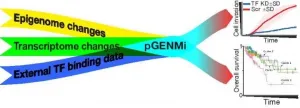
ELSE PRESS RELEASES FROM THIS DATE:
2021-03-29
FINDINGS
A new study by researchers at the UCLA Jonsson Comprehensive Cancer Center found using percutaneous image guided needle based thermal ablation -- the precise application of extreme heat or cold to a tumor using sophisticated ultrasound, CT or MRI in a single outpatient session -- is a safe and effective adjunctive therapy for the local control of metastatic gynecologic cancers throughout lungs, liver, soft tissues in the abdomen and pelvis and bones in patients with advanced localized cancers unresponsive to systemic therapy.
Nearly 96% of the patients in the study achieved a complete tumor response over a median follow up period of 10 months. The overall survival rate was 37.5 months and the progression-free ...
2021-03-29
BOSTON - In the last 20 years, Black adults living in rural areas of the United States have experienced high mortality rates due to diabetes, high blood pressure, heart disease and stroke compared to white adults. In a research letter written by colleagues at Beth Israel Deaconess Medical Center (BIDMC) and published in the END ...
2021-03-29
Age-related macular degeneration (AMD), which leads to a loss of central vision, is the most frequent cause of blindness in adults 50 years of age or older, affecting an estimated 196 million people worldwide. There is no cure, though treatment can slow the onset and preserve some vision.
Recently, however, researchers at the University of Rochester have made an important breakthrough in the quest for an AMD cure. Their first three-dimensional (3D) lab model mimics the part of the human retina affected in macular degeneration.
Their model combines stem cell-derived ...
2021-03-29
Communication between the brain's auditory and reward circuits is the reason why humans find music rewarding, according to new research published in JNeurosci.
Despite no obvious biological benefits, humans love music. Neuroimaging studies highlight similarities between how the brain's reward circuits process music and other rewards like food, money, and alcohol. Yet neuroimaging studies are correlational by nature. In a new study, Mas-Herrero et al. sought to nail down the causal role of this circuitry by using non-invasive brain stimulation.
A group of pop music fans listened ...
2021-03-29
A team led by investigators at Weill Cornell Medicine and NewYork-Presbyterian has used advanced technology and analytics to map, at single-cell resolution, the cellular landscape of diseased lung tissue in severe COVID-19 and other infectious lung diseases.
In the study, published online March 29 in Nature, the researchers imaged autopsied lung tissue in a way that simultaneously highlighted dozens of molecular markers on cells. Analyzing these data using novel analytical tools revealed new insights into the causes of damage in these lung illnesses and a rich data resource for further research.
"COVID-19 is a complex disease, and we still don't understand exactly what it does to a lot of organs, but with this study we were able to develop ...
2021-03-29
Researchers at the Federal University of São Carlos (UFSCar) in the state of São Paulo, Brazil, have developed a novel far red light-emitting luciferin-luciferase system that is more efficient than those available commercially. An article on the subject is published in the International Journal of Molecular Sciences.
The study was supported by São Paulo Research Foundation - FAPESP via the Thematic Project "Arthropod bioluminescence: biological diversity in Brazilian biomes, biochemical origin, structural/functional evolution of luciferases, molecular differentiation of lanterns, biotechnological, environmental and educational applications", for which the principal ...
2021-03-29
ANN ARBOR--In a two-year study that could help guide educators developing the post-pandemic new normal, student groups at the University of Michigan assigned to make video presentations showed more creativity and risk-taking than groups making conventional in-person presentations.
"Given the importance of project-based learning, our study provides a way to turn virtual limitations into an advantage," said Fei Wen, U-M associate professor of chemical engineering. "We can enhance the student experience and learning outcomes."
Higher education, along with society at large, anticipates a shift in the balance between ...
2021-03-29
More physicians and pharmacists are advocating for patients to be made aware of animal byproducts contained in common medications, according to new research in the Journal of Osteopathic Medicine. Common medications, including widely used blood thinners and hormones, are often derived from animal byproducts and prescribed without consulting the patient about their beliefs.
"Patients deserve to know what their medications are made of, yet this information is rarely shared," said Sara Reed, student doctor at Lincoln Memorial University (LMU) DeBusk ...
2021-03-29
Climate change is altering the world we share with all living things. But it's surprisingly difficult to single out climate change as an extinction threat for any one particular species protected under the Endangered Species Act.
To date, the U.S. Fish and Wildlife Service has only formally considered impacts from climate change in listing actions for four animal species and one alpine tree.
But the effects of climate change extend to temperate climates as well. A new analysis of population data published in the journal Ecosphere shows that climate change represents a specific extinction threat for an endangered coastal lupine plant.
Biologists including Eleanor Pardini at Washington University in St. Louis have tracked all of the known stands ...
2021-03-29
HOUSTON - (March 29, 2021) - This could be where the rubber truly hits the road.
Rice University scientists have optimized a process to convert waste from rubber tires into graphene that can, in turn, be used to strengthen concrete.
The environmental benefits of adding graphene to concrete are clear, chemist James Tour said.
"Concrete is the most-produced material in the world, and simply making it produces as much as 9% of the world's carbon dioxide emissions," Tour said. "If we can use less concrete in our roads, buildings and bridges, we can eliminate some of the emissions at the very start."
Recycled tire waste is already used as a component of Portland cement, but graphene has been proven to strengthen cementitious materials, ...
LAST 30 PRESS RELEASES:
[Press-News.org] New computational models to understand colon cancer


